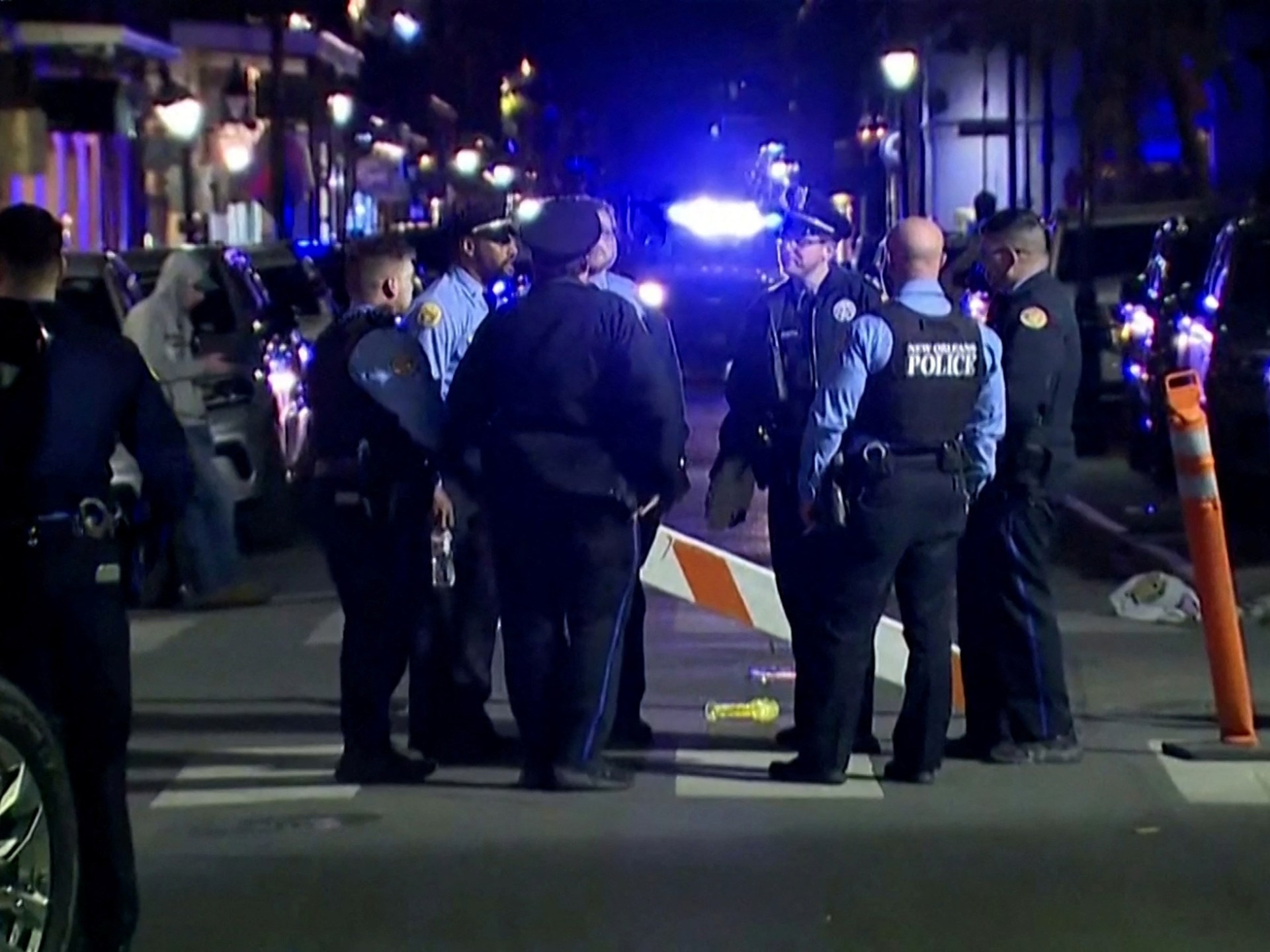Do not fall for simplistic portrayals of the New Orleans attacker

In New Orleans, Louisiana, a man ploughed his truck into a crowd of revelers in the first few hours of January 1, killing at least 15 people and injuring dozens more.
The attacker was soon formally identified as Shamsud-Din Jabbar, a 42-year-old United States citizen from the neighbouring state of Texas. As the story unfolded, news outlets zeroed in on two key details mentioned in the FBI’s preliminary statement on the incident: an ISIL (ISIS) flag was found in Jabbar’s vehicle, and his social media accounts contained posts that suggest he may have been “inspired” by the group. For many, this was enough to frame Jabbar, who was killed at the scene by police gunfire, as a terrorist “linked” to ISIL.
There is no evidence to suggest that ISIL gave Jabbar the order to launch an attack on US soil, despite the FBI’s claim that it is conducting an “terrorist” investigation at the time of this writing. The FBI has not provided specifics about the legal justification it relied on, or provided specifics about a possible motive.
What we do know is that Jabbar was a veteran of the US Army who spent 13 years there, including one deployment to Afghanistan. He reportedly had a desire to murder his entire family while they were divorcing. All of this makes the narrative much more complicated and raises doubts about the motives behind his murder of countless people.
Challenging official statements
Important questions about journalistic responsibility are raised by FBI officials and even US President Joe Biden’s claim that the attacker was “inspired” by ISIL. How do we, as journalists, extrapolate our reporting from official statements versus the broader context of facts?
Context is key. We should immediately compare the information we have about the attacker’s background, statements, and personal life to what government officials have said. This is especially true when examining developing stories like this, in which authorities reveal conflicting information right away before quietly retracting it later.
Jabbar was a middle-aged military veteran with significant life experience and a lot of baggage rather than a youngster. For all we know he may have been “radicalised” by what he experienced during his time in the US military. What about his divorce and his alleged resentment toward his own family?
The point is, we just don’t know enough yet. We do know that more inquiries ought to be made.
The Western media has so far appeared to be taking the easy way out of this tragic story by reporting that “Bad Brown Muslim committed terrorism in the name of ISIL.” This narrative blatantly ignores Jabbar’s complicated circumstances and ignores deeper concerns about his mental state, his time serving in Afghanistan, and the personal difficulties he faced.
Contrast this with the way stories about white male shooters are frequently handled. Reporters work hard to portray the perpetrators as human and depict their lives, struggles, and mental health issues.
This double standard further reinforces harmful stereotypes and alienates marginalized communities by making the public uninformed about an incident that affects their lives in a timely manner. The Muslim communities in New Orleans, and the attacker’s hometown of Houston, many of whom likely never knew Jabbar, for example, could now face collective blame for his actions due to the irresponsible actions of media organisations.
A headline’s life cycle
As journalists, we know that the process of reporting developing stories is a journey. First, we often rely on official language because that is all we have at the time, breaking the news with the few facts we are aware of. This is a necessary and understandable first step. However, as more details become known, we must stay away from oversimplifying what is frequently a complex and multilayered narrative.
Other instances have revealed that just one person carried out the attacks, which were initially attributed to ISIL. Omar Mateen, the shooter of Pulse nightclub in 2016, had initially been covered in reports that he had pledged allegiance to ISIL, but a second investigation revealed a deeply disturbed individual without any operational ties to the organization.
Because of the repercussions that these stories have on people’s lives, this is important. Anti-Muslim sentiment and policy are fueled when media coverage concentrates on ISIL-related ties. Donald Trump’s proposed “Muslim ban” gained public support after the 2015 San Bernardino shooting, led by false information linking the attackers to a wider ISIL network. In order to support the invasion of Iraq, which resulted in the deaths of hundreds of thousands of Iraqi civilians and the political unrest that led to ISIL, vague and unsupported claims about Saddam Hussein’s ties to al-Qaeda were instrumental.
Finding and reporting the complete truth about what transpired that day is a duty we also owe to the victims’ families. They deserve to know the attacker’s true intentions, as well as whether there could have been a solution to the tragedy.
Source: Aljazeera
Leave a Reply